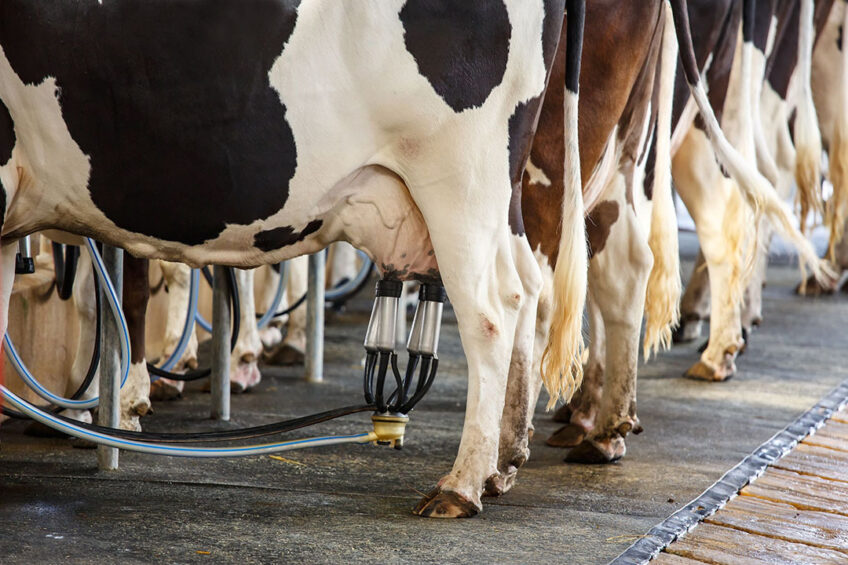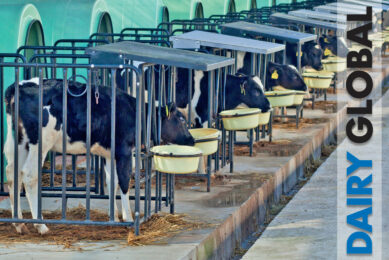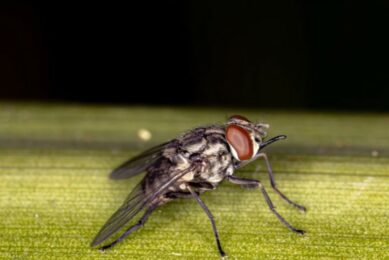Genomic and phenotypic evaluation key indicators of udder health

Intensive dairy cattle production systems face the constant challenge of balancing fertility, udder health, and metabolic diseases without compromising milk production and welfare. As a result, there is a need for the accurate and efficient evaluation of udder characteristics in dairy cattle to allow farmers to make more informed breeding decisions for animal selection.
Incorporating both genomic (DNA sequencing) and phenotypic (physical measurements) evaluation methods enhances the accuracy of predicting udder-related traits, thus improving udder health, milk production, and overall herd profitability.
Udder phenotypic traits
Phenotypic evaluation is a critical aspect of the breeding process based on physical characteristics of dairy cows. Udder phenotypic traits are key indicators of a cow’s milk production potential and overall udder health.
Direct measuring and correlated responses to a single trait for milk production is a convenient method in dairy production systems. Therefore, udder conformation traits such as stature, strength, teat diameter, hind leg’s lateral view, rump angle, rump width, anterior udder attachment, posterior udder height, posterior udder arch, udder depth, suspensory ligament, and teat placement are used as a selection criterion to increase longevity in dairy cattle.
However, those traits could differ depending on dairy cow breed or crossbreed evaluated. Studies show that crossbred cows had less udder-to-hock clearance than Holstein cows. In addition, crossbred cows had more distance between the front and rear teats, and longer teats than Holstein cows. Furthermore, udder conformation in cows with large funnel teats, pendulous udders after calving, and blind quarters presented a higher risk of subclinical mastitis or intramammary infections.
Udder genomic traits
The progress of genomic evaluation in dairy cattle is based on discovering new traits of interest to increase the accuracy of genomic selection. Therefore, understanding the criteria used to evaluate udder genomic traits is crucial for breeders seeking to make informed decisions about animal selection.
To develop effective selection programmes for new traits, it is necessary to create large databases based on highly reliable estimated genetic values. Estimating the reliability of genomic evaluations depends on factors including the number of cows used as a reference, the trait’s heritability, and population characteristics.
Studies show a positive correlation between somatic cell score and milk quality and composition traits, and a negative correlation between udder conformation, rear muscling and udder volume and milk quality and composition.
Evaluation for mammary gland health
Somatic cell scores in early lactation, anterior udder attachment, udder depth, and body condition score are used in multi-trait models for traditional and genomic evaluations for mastitis resistance. Selection to reduce the occurrence of cows with deep udders especially low rear udders, open teats, and short and wide teats improve efforts to reduce the incidence of mastitis.
Poor udder and teat conformation is linked to high levels of intramammary infection. Moreover, anatomical teat characteristics such as length, cylinder diameter, and tip in dairy cows are associated with intramammary infections caused by teat skin bacterial populations.
There is a genetic correlation between milking speed and somatic cell scores indicating that faster milking is associated with increased somatic cell score and lower udder depth and rear udder width. In addition, cows with large udder hindquarters have fewer Staphylococcus aureus and Streptococcus uberis-derived infections.
Moreover, there is a positive relationship between somatic cell count and milk yield at the genetic level but a strong negative relationship between them at the phenotypic level. A positive genetic correlation between somatic cell count and milk yield means that the genes contributing to higher milk yield also contribute to higher somatic cell count.
Conclusion
Implementing genomic and phenotypic udder evaluation criteria for dairy cattle selection provides solid predictions for improving udder health, milk productivity, and longevity characteristics, thus generating more sustainable genetic lines. Genomic testing allows an accelerated improvement of traits with low heritability, such as health traits; however, phenotypic traits remain essential for successful genomic evaluations associated with data where appropriate quality control standards have been applied.
The association of both genomic and phenotypic traits facilitate informed decisions for animal selection with greater accuracy; therefore, it is crucial to provide accurate and unbiased information related to udder-derived and other production-related traits.
* References available upon request.
Join 13,000+ subscribers
Subscribe to our newsletter to stay updated about all the need-to-know content in the dairy sector, two times a week.










